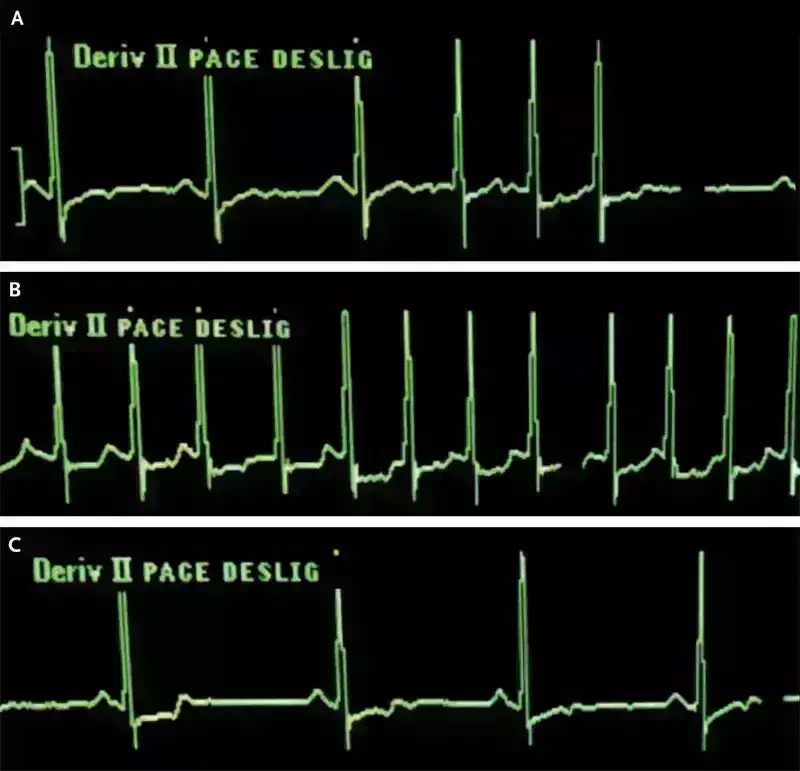- Home
- Medical news & Guidelines
- Anesthesiology
- Cardiology and CTVS
- Critical Care
- Dentistry
- Dermatology
- Diabetes and Endocrinology
- ENT
- Gastroenterology
- Medicine
- Nephrology
- Neurology
- Obstretics-Gynaecology
- Oncology
- Ophthalmology
- Orthopaedics
- Pediatrics-Neonatology
- Psychiatry
- Pulmonology
- Radiology
- Surgery
- Urology
- Laboratory Medicine
- Diet
- Nursing
- Paramedical
- Physiotherapy
- Health news
- Fact Check
- Bone Health Fact Check
- Brain Health Fact Check
- Cancer Related Fact Check
- Child Care Fact Check
- Dental and oral health fact check
- Diabetes and metabolic health fact check
- Diet and Nutrition Fact Check
- Eye and ENT Care Fact Check
- Fitness fact check
- Gut health fact check
- Heart health fact check
- Kidney health fact check
- Medical education fact check
- Men's health fact check
- Respiratory fact check
- Skin and hair care fact check
- Vaccine and Immunization fact check
- Women's health fact check
- AYUSH
- State News
- Andaman and Nicobar Islands
- Andhra Pradesh
- Arunachal Pradesh
- Assam
- Bihar
- Chandigarh
- Chattisgarh
- Dadra and Nagar Haveli
- Daman and Diu
- Delhi
- Goa
- Gujarat
- Haryana
- Himachal Pradesh
- Jammu & Kashmir
- Jharkhand
- Karnataka
- Kerala
- Ladakh
- Lakshadweep
- Madhya Pradesh
- Maharashtra
- Manipur
- Meghalaya
- Mizoram
- Nagaland
- Odisha
- Puducherry
- Punjab
- Rajasthan
- Sikkim
- Tamil Nadu
- Telangana
- Tripura
- Uttar Pradesh
- Uttrakhand
- West Bengal
- Medical Education
- Industry
Modified Valsalva manoeuvre effectively treats supraventricular tachycardia in adults

Courtesy by André Zimerman and Andre d’Avila, Speech-Induced Atrial Tachycardia, NEJM
Cardiac arrhythmia, specifically paroxysmal supraventricular tachycardia (SVT), accounts for a substantial proportion of emergency medical services resources utilisation. Reconversion requires increasing the atrioventricular node's refractoriness, which can be achieved by vagal manoeuvres, pharmacological agents or electrical cardioversion.
There are multiple variants of vagal manoeuvres, including the Valsalva manoeuvre (VM). While the effectiveness of the standard Valsalva manoeuvre has already been systematically reviewed, there has been no such analysis for the modified Valsalva manoeuvre.
Recently, a report published in the European Journal of Emergency Medicine has stated that modified Valsalva manoeuvre has been more effective when compared to standard Valsalva manoeuvre in treating patients with supraventricular tachycardia.
Lodewyckx, Eric and colleagues from the Department of PXL-Healthcare, PXL University of Applied Sciences and Arts compared the effectiveness of the modified Valsalva manoeuvre versus the standard Valsalva manoeuvre in restoring the normal sinus rhythm in adult patients with supraventricular tachycardia.
The primary outcome was the reconversion to a sinus rhythm. Secondary outcomes included medication use, adverse events, length of stay in the emergency department and hospital admission.
Five randomised controlled trials were included, with a combined total of 1181 participants. The meta-analysis demonstrated a significantly higher success rate for reconversion to sinus rhythm when using the modified Valsalva manoeuvre compared to the standard Valsalva manoeuvre in patients with an supraventricular tachycardia. More adverse events were reported in the modified Valsalva manoeuvre group, although this difference is NS.
The available evidence suggests that medication use was lower in the modified Valsalva manoeuvre group than the standard Valsalva manoeuvre group. However, medication use could not be generalised across the different studies.
None of the included studies showed a significant difference in length of stay in the emergency department. Only one study reported on hospital admission, with no significant difference between the two groups.
The authors concluded that the available evidence is highly suggestive to support the use of the modified Valsalva manoeuvre compared to the standard Valsalva manoeuvre in the treatment of adult patients with supraventricular tachycardia.
Furthermore, meta-analysis showed a higher success rate, required less medication use, and resulted in an equal number of adverse events. However, these results cannot be regarded as definitive in the absence of higher-quality studies.
doi: 10.1097/MEJ.0000000000000862
Dr. Nandita Mohan is a practicing pediatric dentist with more than 5 years of clinical work experience. Along with this, she is equally interested in keeping herself up to date about the latest developments in the field of medicine and dentistry which is the driving force for her to be in association with Medical Dialogues. She also has her name attached with many publications; both national and international. She has pursued her BDS from Rajiv Gandhi University of Health Sciences, Bangalore and later went to enter her dream specialty (MDS) in the Department of Pedodontics and Preventive Dentistry from Pt. B.D. Sharma University of Health Sciences. Through all the years of experience, her core interest in learning something new has never stopped. She can be contacted at editorial@medicaldialogues.in. Contact no. 011-43720751
Dr Kamal Kant Kohli-MBBS, DTCD- a chest specialist with more than 30 years of practice and a flair for writing clinical articles, Dr Kamal Kant Kohli joined Medical Dialogues as a Chief Editor of Medical News. Besides writing articles, as an editor, he proofreads and verifies all the medical content published on Medical Dialogues including those coming from journals, studies,medical conferences,guidelines etc. Email: drkohli@medicaldialogues.in. Contact no. 011-43720751


